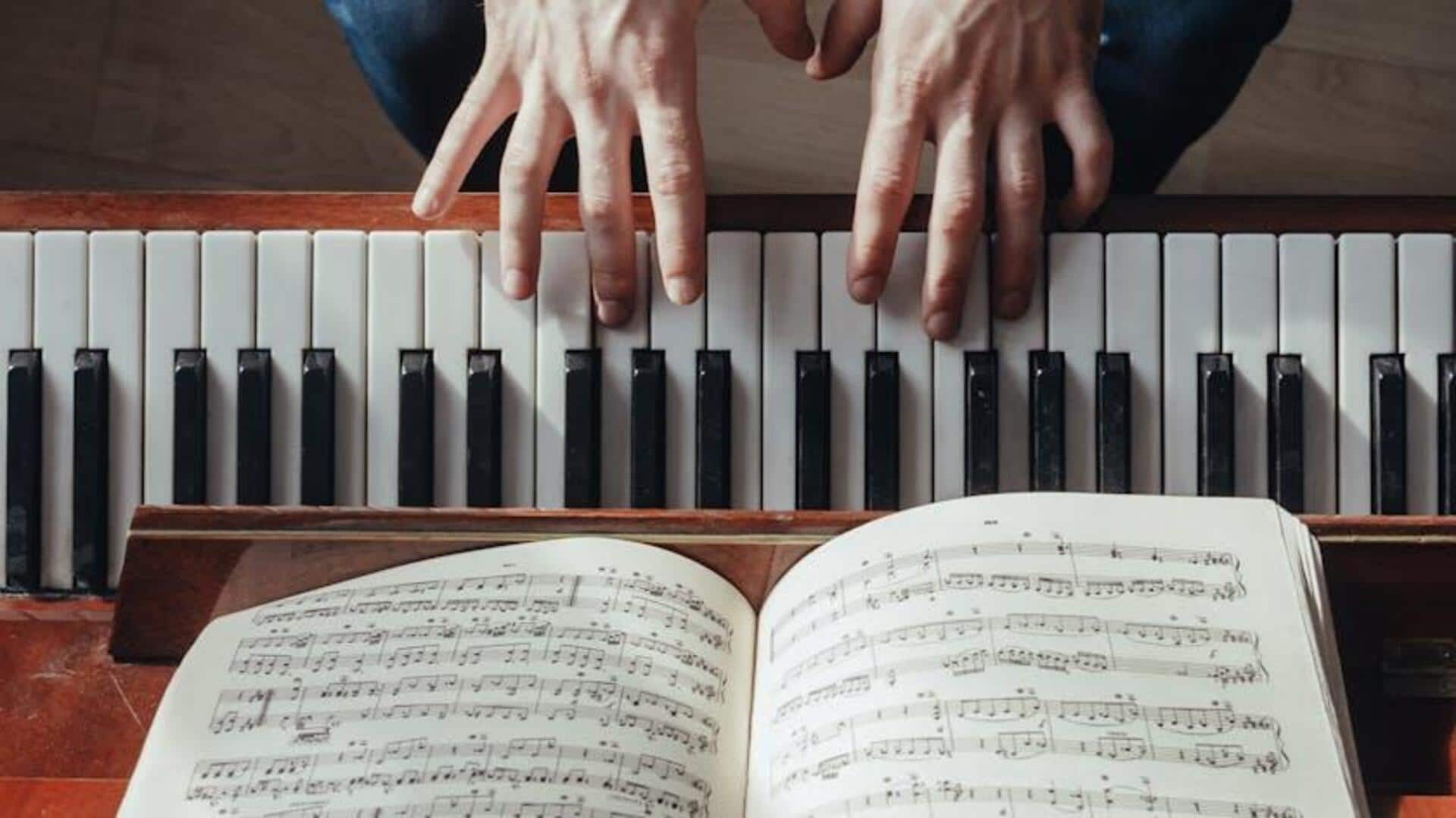
Sync your hands: Piano coordination techniques
What's the story
Achieving hand independence on the piano is a key milestone for any pianist, allowing you to tackle more complex pieces and enhance your overall performance. This ability to play different rhythms and melodies with each hand simultaneously is often a major hurdle for beginners and even seasoned players. These exercises will help you build that elusive independence, focusing on coordination, strength, and control.
Basics
Start with scales and arpeggios
Scales and arpeggios are fundamental exercises for building finger strength and independence. Begin by playing scales slowly with each hand individually, then together at the same pace. Gradually increase the tempo, but ensure you maintain accuracy. For arpeggios, practicing them in different keys will help you become more confident in navigating the keyboard. This will lay a solid foundation for more advanced hand coordination.
Technique builder
Hanon exercises
The Hanon exercises are meant to increase finger dexterity, agility, and strength. Begin these exercises slowly, focusing on even touch and rhythm. As you gain proficiency, gradually increase the tempo while ensuring accuracy. Practicing one hand staccato and the other legato provides a different challenge, strengthening each hand's skills independently.
Rhythm mastery
Poly-rhythms practice
Practicing poly-rhythms develops hand independence by playing different rhythms in each hand. Start with simple ones like two:three, where one hand plays two notes per beat, and the other plays three. Use a metronome for steady timing and start slow, gradually increasing speed as you get comfortable. This improves your rhythmic understanding and coordination.
Classical approach
Bach's inventions
Johann Sebastian Bach's inventions are keyboard compositions that serve as technical studies for developing finger independence and counterpoint skills (the art of combining two or more melodies). Each invention poses distinct challenges, demanding fine control and coordination of both hands. Mastering these pieces not only enhances technique but also fosters a profound sense of musical expression through the interpretive artistry of intricate baroque music.
Creative exploration
Improvisation techniques
Improvisation fosters creativity and strengthens hand independence by allowing you to create music on the spot without relying on sheet music. Start with a simple chord progression in your left hand and improvise melodies in your right hand or vice versa. Try different styles like jazz or blues. These styles often use syncopated rhythms and demand strong left-hand accompaniments against melodic right-hand lines.